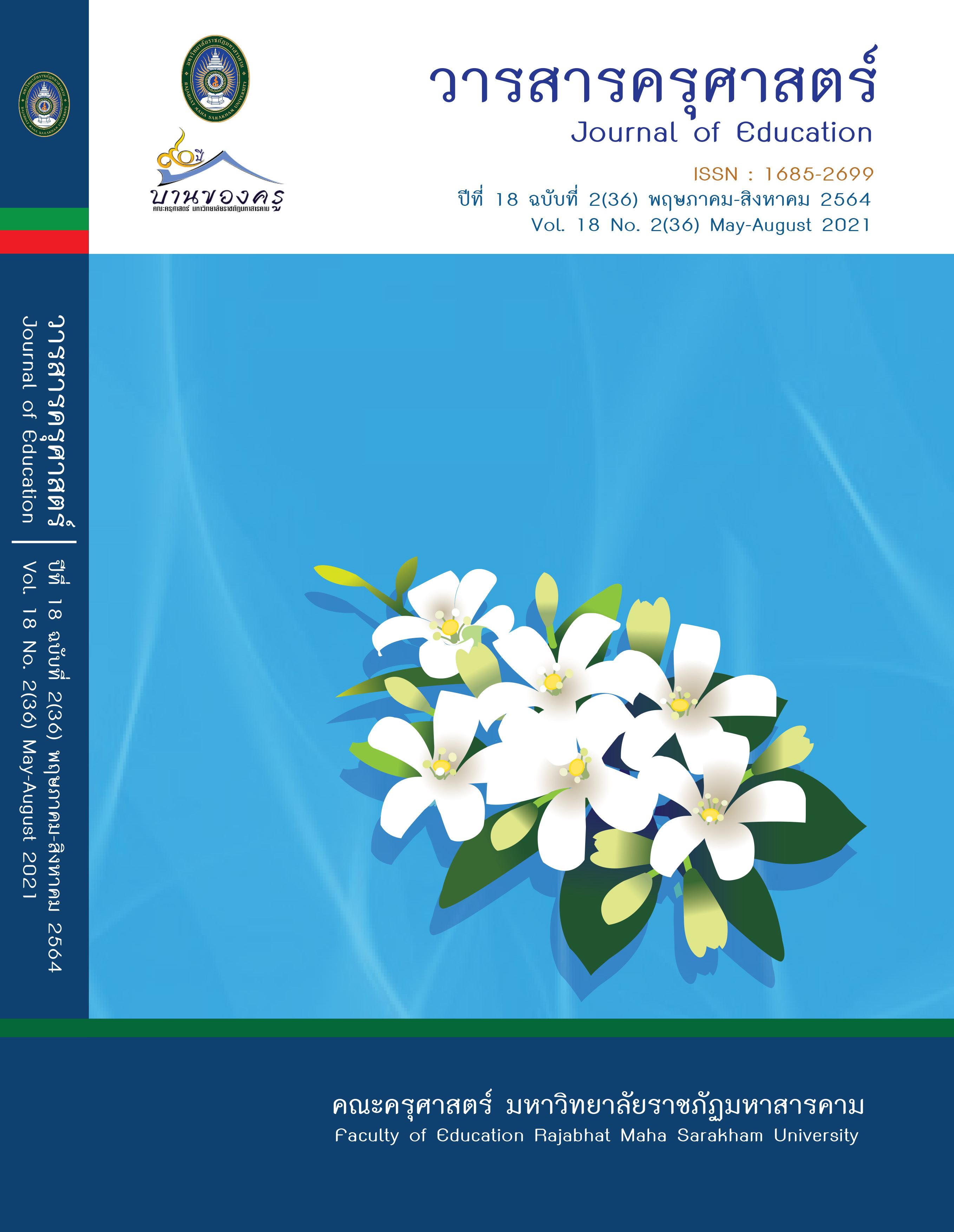The Study of Management Factors on Cultivating aHappy Workplace Management Factor
Main Article Content
Abstract
The objectives of this research were: 1) to study factors that affected the Sports Authority of Thailand’s employees to become a member of a happy workplaceand2) tostudy relationof behavioral indicators for employees to become part of a happy workplace among the Sports Authority of Thailand’s employees. Thequantitative research method was adopted in this researchby sending online survey tothe Sports Authority of Thailand’s employees for completing a questionnaire. The achieved sample size was 381 persons.The research tool was a questionnaire, and thedescriptive statistics included:percentage, mean, standard deviation, and correlation analysis. The research results were as follows:
1. The 8 factors affected a happy workplace,such ashappy body, happy heart, happy money, happy relax, happy brain, happy soul, happy family,and happy society.
2. Organization commitment factors wereconsisted of mind, organizational commitment, and organizational standard.Factors affected employees for being in part of happy workplace,namely helpfulness, selfless, patient, cooperate and accountability in position.
3. The Sports Authority of Thailand’s employees who participated in this research were male and female equally at 44.9%, aged between 25-55 years old and the average age was 45.37 years old. Monthly household income of the sample group was 10,000 - 300,000 Baht, and the averageof monthlyhousehold income was 74,136.46 Baht. 54.9% of the samples had got an education level higher than bachelor’s degree. 55.1% of them got married.70.1% of the samples had work experiences more than 12 years, and 45.1% of them were taking in charge of leadership position.
4. The correlation towards behavioral indicators of being part of a happy workplace among the Sports Authority of Thailand’s employee wassignificantly correlatedat 0.01 level.
Article Details
ข้อกำหนดเบื้องต้นที่ผู้นิพนธ์(ผู้ส่งบทความ) ควรทราบ
1. ผู้นิพนธ์ที่ประสงค์จะลงตีพิมพ์บทความกับวารสาร ตั้งแต่เดือนมกราคม 2563 เป็นต้นไป ให้ใช้รูปแบบใหม่ (Template 2563) โดยสามารถดูตัวอย่างได้ที่เมนู GUIDELINES
2. จะตีพิมพ์และเผยแพร่ได้ ต้องผ่านการประเมินจากผู้ทรงคุณวุฒิ (Peer Review)
3. การประเมินบทความโดยผู้ทรงคุณวุฒิ (Peer Review) เป็นแบบ Double Blind
4. การอ้างอิงบทความใช้หลักเกณฑ์ APA (American Psychological Association) คลิก
5. บทความถูกปฏิเสธการตีพิมพ์ ไม่ผ่านการประเมิน ผู้นิพนธ์ขอยกเลิกเองหรือชำระเงินก่อนได้รับการอนุมัติ ทางวารสารไม่มีนโยบายการคืนเงิน
References
วุฒิ ชินชนะโชคชัย และ อัสนียา สุวรรณศิริกุล.(2549). คุณภาพชีวิตในการทำงานที่แท้จริง สู่ความภักดีที่ยั่งยืน. วารสารบริหารคน.27(4), 27-32.
สมหวัง พิธิยานุวัฒน์. (2541).รวมบทความทางวิธีวิทยาการวิจัยเล่ม 1.สำนักพิมพ์แห่งจุฬาลงกรณ์มหาวิทยาลัย.
สำนักงานกองทุนสนับสนุนการสร้างเสริมสุขภาพ. (2552). คู่มือมาสร้างองค์กรแห่งความสุขกันเถอะ. สำนักงานกองทุนสนับสนุนการสร้างเสริมสุขภาพ.
สำนักงานกองทุนสนับสนุนการสร้างเสริมสุขภาพ.(2553, 25 มีนาคม 2564). องค์กรแห่งความสุข.สำนักงานกองทุนสนับสนุนการสร้างเสริมสุขภาพ.
อภิชัย มงคล, วัชนี หัตถพนม, ภัสรา เชษฐ์โชติศักดิ์, วรรณประภา ชลอกุล, ละเอียด ปัญโญใหญ่,สุจริต สุวรรณชีพ. (2544).การศึกษาดัชนีวัดสุขภาพจิตคนไทย.วารสารสมาคมจิตแพทย์แห่งประเทศไทย, 46(3), 209-225.
อภิชัย มงคล, ทวี ตั้งเสรี, พิเชฐ อุดมรัตน์, วัชนี หัตถพนม, ภัสรา เชษฐ์โชติศักดิ์, วรวรรณ จุฑา, ระพีพร แก้วคอนไทย. (2547).รายงานการวิจัยเรื่องการพัฒนาและทดสอบดัชนีชี้วัดสุขภาพจิตคนไทยฉบับใหม่.โรงพยาบาลจิตเวชขอนแก่นราชนครินทร์.
Diener, E. E., S. Lyubomirsky, and L. King. (2005).The Benefits of Frequent Positive Affect: Dose Happiness Lead to Success?.Psychological Bulletin, 131(6), 803-855.
Eisenberger, R. (1990).Perceivedorganizational support and employee diligence, commitment, and innovation. Journal of Applied Psychology, 75, 193-208.
Katz, D. and R. L. Kahn. (1978).The Social Psychology of Organizations (2nd ed.).John Wiley and Sons.
Mathis, R. L. and J. H. Jackson. (1997). Human resources management(8th ed).West Publishing.
Niehoff, P. B. (2001). A motive-based view of organizational citizenship behaviors: Applying an old lens to a new class of organizational behaviors. Kansas State University, Department of Management College of Business Administration.
Organ, D. W. and T. S. Bateman. (1991). Organizational Behavior(4th ed.).Irwin, Inc.
Richmond, L. (1999). Work as a spiritual practice.Broadway books.
Steers, R. M. (1991). Introduction to organizational behavior. (5th ed).Foresman.
Steers, R. M. and L. Porter. (1991). Motivation and work behavior.McGraw-Hill. Book Company.


